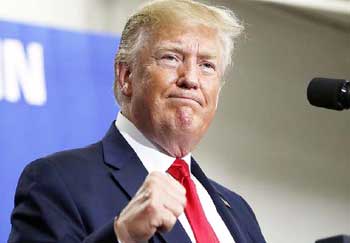April 1, 2025 – The Indian stock market experienced a severe setback at the start of the financial year 2025, with the BSE Sensex plunging sharply by 1.80%, while Nifty fell below the critical 23,200 mark. This massive decline came amidst growing concerns over the new US tariffs set to be enforced by President Donald Trump from April 2, 2025. This marks the worst start to a financial year since the Covid-19-affected year of 2020-21.
Market Overview:
BSE Sensex opened at 76,882.58, down by more than 500 points. During intraday trading, it dropped further to a low of 75,912.18, before closing at 76,024.51, down 1,390.41 points or 1.80%.
NSE Nifty-50 mirrored the downfall, slipping to a low of 23,136.40 points before ending the day at 23,165.70, down by 353.65 points or 1.50%.
Top Losers and Gainers:
Top Losers:
Bajaj Finserv saw the biggest drop, with Infosys, HDFC Bank, Bajaj Finance, Axis Bank, HCL Tech, TCS, and Sun Pharma also experiencing significant declines.
Top Gainers:
IndusInd Bank stood out with a rise of over 5%, alongside Zomato, Nestle India, ITC, Bharti Airtel, and Power Grid, which also posted gains.
Investors Lose ₹4 Lakh Crore:
The market crash resulted in a loss of ₹4 lakh crore in market capitalization. The total market cap of BSE-listed companies dropped to ₹4,09,64,821 crore from ₹4,13,75,586 crore on Friday, representing a ₹4.1 lakh crore loss.
A History of Volatility:
In 2020-21, the market faced a 4% drop on the first day of the financial year, triggered by the Covid-19 lockdown, with the Sensex falling to 28,265.
However, in the following years, the markets bounced back. On April 1, 2021, the Sensex rose by 1.05% to 50,029, while in 2022, it saw another solid increase of 1.21%, closing at 59,276.
4 Major Reasons for the Market Drop:
US Tariff Concerns: Market participants are wary of the US tariff plan, especially ahead of Trump’s tariff implementation on April 2, 2025. Investors are adopting a cautious stance in both Indian and global markets.
Profit Booking: After the sharp rally in the market since March, investors are booking profits before the tariff implementation deadline.
Foreign Investor Activity: Foreign Institutional Investors (FIIs) turned net sellers on Friday, breaking a six-day buying streak and selling ₹4,352 crore worth of Indian stocks.
Weak Global Market Signals: Although some Asian markets showed recovery on Tuesday, there was continued weakness in Wall Street futures. Japan’s Nikkei dropped by 0.01%, while South Korea’s Kospi gained by 1.5%.
Trump’s Tariff Announcement:
President Donald Trump confirmed on Sunday that the equalization tariffs would be implemented from April 2, applying to all countries with no exemptions. He further clarified that these tariffs will be comprehensive, not just targeting countries with large trade imbalances. This decision has caused a ripple effect in the market as investors brace for the global economic impact.
Global Market Signals:
Asian Markets:
Japan’s Nikkei gained 0.6%, South Korea’s Kospi rose 0.92%, and Australia’s ASX200 climbed 0.34%, reflecting early strength after Monday’s declines.
US Markets:
S&P 500 and Dow Jones closed higher, with the S&P rising by 0.55% and the Dow gaining 1%, while Nasdaq faced a minor dip of 0.14%.
The Indian stock market’s sharp decline on the first day of the financial year 2025 reflects investor uncertainty ahead of the US tariff measures. With global markets also displaying mixed signals, it remains to be seen how the markets will adjust to the evolving trade dynamics over the coming weeks. Investors are urged to stay vigilant as this volatile phase unfolds.





















